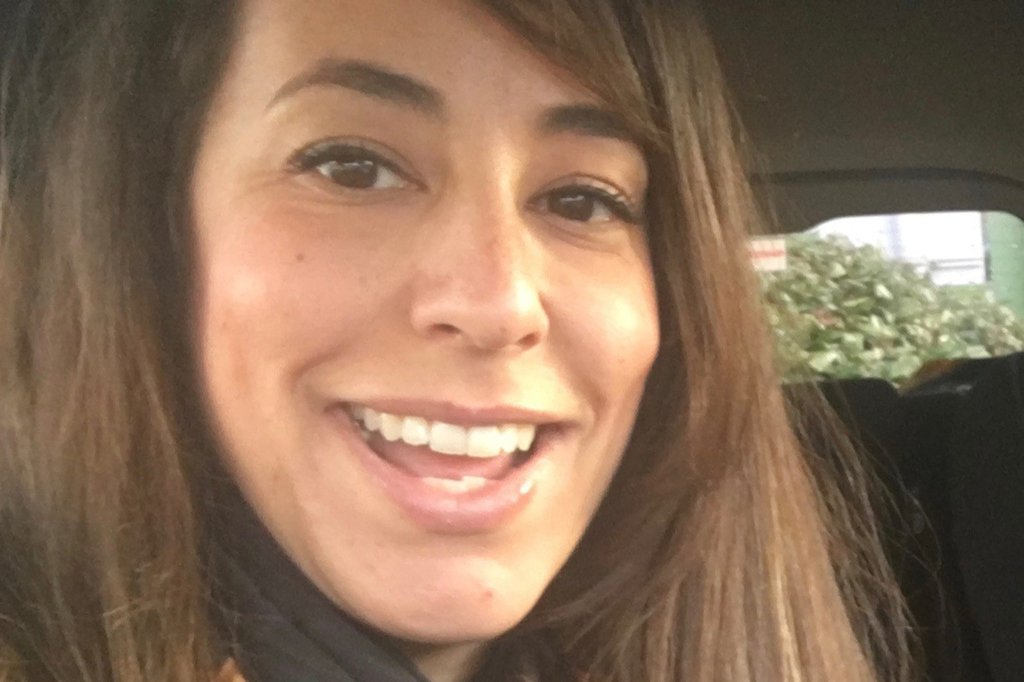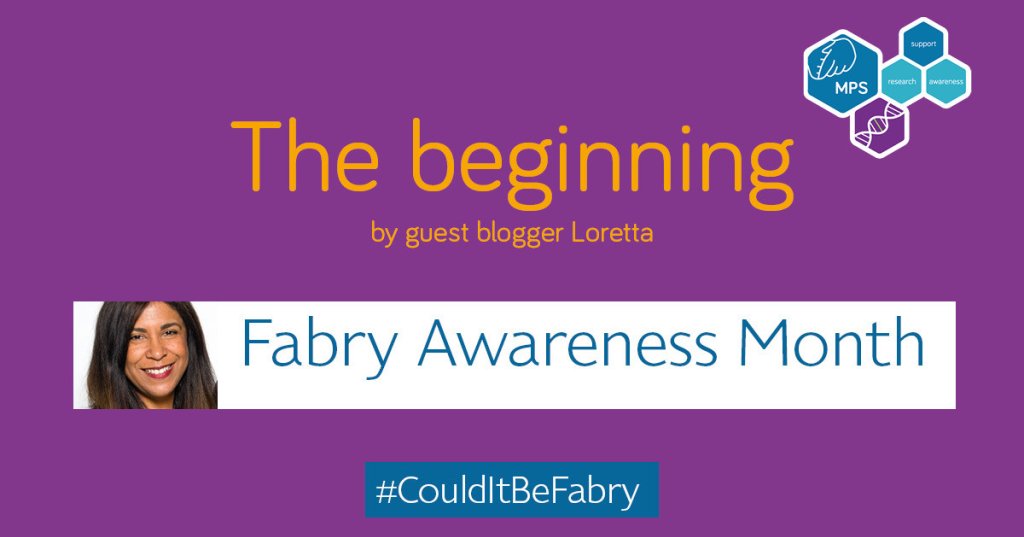This Fabry Awareness Month, we are featuring a series of articles titled “Could it be Fabry?” from guest blogger Loretta MacInnes, a Fabry patient who wasn’t diagnosed until she was 50 despite having symptoms since childhood.
Information contained in these articles has been collected and written by our guest blogger and does not necessarily reflect the opinions of the MPS Society or its Board of Trustees.
What is Fabry?
Fabry Disease is classed as a rare disease, with currently about 1:40,000 people diagnosed with the condition. I believe that it is under-reported and that the rate of Fabry across the population is higher. People diagnosed with Fabry are fortunate in that there are treatments available to slow down the progression of this disease. It is important to start these as soon as possible before the disease progresses and organs become damaged.
It is crucial that diagnosis occurs as early in life as possible so that if the person is eligible for treatment, then the treatment can begin. The problem is that unless you have a family member who has been previously diagnosed with Fabry Disease and is tested to check if you have the illness, it can be very difficult to spot and can take years to receive the correct diagnosis and treatment.
It is crucial that diagnosis occurs as early in life as possible so that if the person is eligible for treatment, then the treatment can begin.
There are distinct indications that someone may have Fabry Disease. With a number of these indicators being found in the eyes, optometrists and other eye professionals are in an ideal position to pick up on these.
Eyes
I had two signs of Fabry Disease that could have been picked up by the many ophthalmologists and optometrists that I had seen over the years had they known what they were looking at. This is important, as the earlier you begin treatment for Fabry Disease, the more likely you are to slow down disease progression.
The first of these signs were whorls on my cornea (cornea verticillata) which were visible when I was examined using a slit-lamp. Corneal whorls are always caused by something. They could be because you are taking certain medications, or they could form due to illness. So they should always warrant questions from the person examining your eyes.
I have worn contact lenses since I was 16 and so have had many slit-lamp examinations. Some of these slit-lamp examinations would have revealed these corneal whorls to the examiner. No-one had ever mentioned the corneal whorls to me until I was 51 and had recently been diagnosed with Fabry. This curious optometrist told me that I had an odd pattern on my cornea and drew the whorls for me. I had done my research on Fabry following my diagnosis and knew that these were the cornea verticillata- a key symptom found in Fabry sufferers. I told her what they were and she was genuinely excited - her response was, “You learn something new every day, I’ll look it up later. Now I know what these could be if I see them in somebody else”.
That was fantastic. My optometrist now knew that Fabry Disease existed, she was going to educate herself, and her knowledge could potentially shorten the diagnosis route for someone with undiagnosed Fabry and quicken their path to treatment.
This is so important for all optical professionals, as apparently these whorls can be seen in the majority of people with Fabry Disease, with research putting this figure between 73% to over 90% of people with Fabry. It warrants the question "Could it be Fabry?"
The second sign that I had Fabry were tortuous vessels in my eyes, and an old bleed that was seen in my left eye. This was years before my diagnosis. These tortuous vessels have, no doubt, been visible from an early age, but were never questioned as being odd. It was dismissed as "one of those things" and "nothing to worry about". I also often had episodes of blurred vision, but none of this was deemed important.
Tortuous vessels in the eye are not specific to Fabry Disease and can be the sign of many other issues, but they should be an indicator that something isn’t right. Along with other measures, their presence should perhaps warrant examination with a slit-lamp to check for corneal whorl with at least the consideration of Fabry Disease, alongside other conditions.
There are other optical indicators that a person could have Fabry Disease which I have not experienced, including Fabry cataract. I recently found an excellent paper that provides an in-depth examination of indicators of Fabry Disease in the eyes and provides an important narrative about the role of Ophthalmology in the early detection of Fabry Disease by Professor Colin Willoughby from the University of Liverpool. It’s definitely worth a read.
What to look for?
The eyes can be key to a Fabry Diagnosis. I would urge all optical professionals to take note of these indicators for Fabry:
Cornea Verticillata
Fabry Cataract
Tortuous vessels
Unexplained bleeds in the eye
If any of the above isn’t on your referral guidelines, then you could ask for them to be added. I urge you not to accept that it’s too rare to bother with. ALL rare diseases are worth the bother. Early intervention can make a huge difference to a person’s quality, and sometimes even length of life.
If Fabry Disease is suspected, talk to your patient and follow your referral guidelines to ensure the individual (if willing) is referred to a Fabry Specialist Centre. This process will depend upon area guidelines. If your guidelines allow, you could do a direct referral to the Specialist Centre yourself.
My final plea is that if you see any of the above indicators, please take note and discuss them with the individual concerned. They may be nothing to worry about, but please ask the question, "Could it be Fabry?". If it is and you are referred for diagnosis, then you could be making a huge impact on that person’s life.
Thank you.
Loretta

Follow me: @MyFabryDisease
Website: www.myfabrydisease.com
About the author
Loretta MacInnes was diagnosed with Fabry Disease when she was 50 despite having symptoms since childhood. As part of Fabry Awareness Month she is working with the MPS Society to reach out to healthcare professionals in key areas where Fabry Disease can impact. If you know what to look for, you could make a real difference to someone by enabling diagnosis and treatment of this disease. Are healthcare professionals of all descriptions aware of the indicators of Fabry and able to ask, “Could it be Fabry?”



